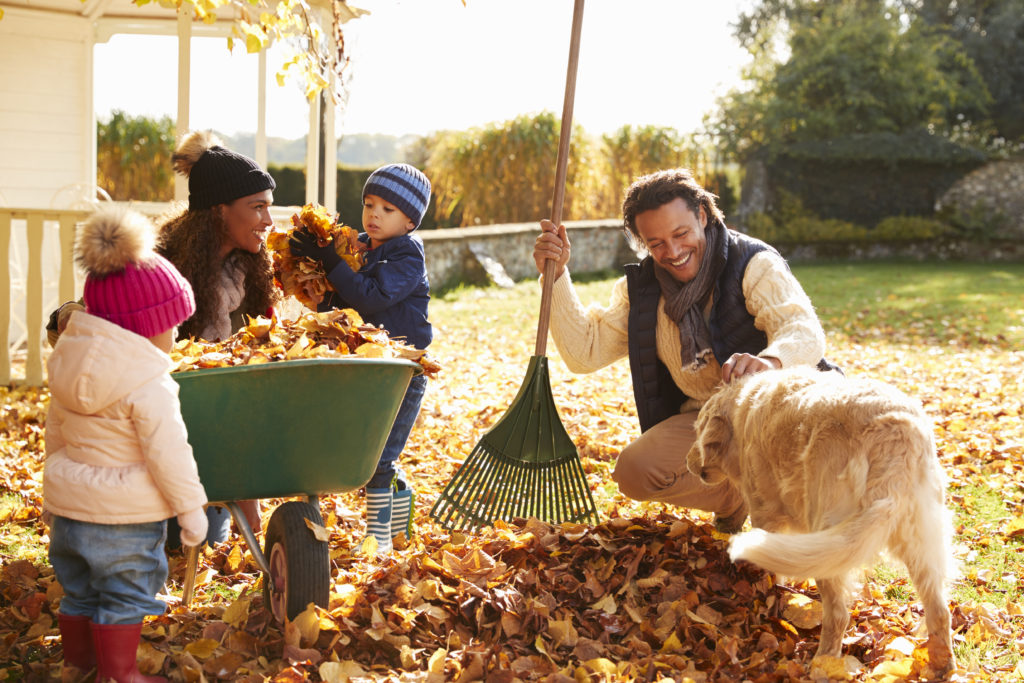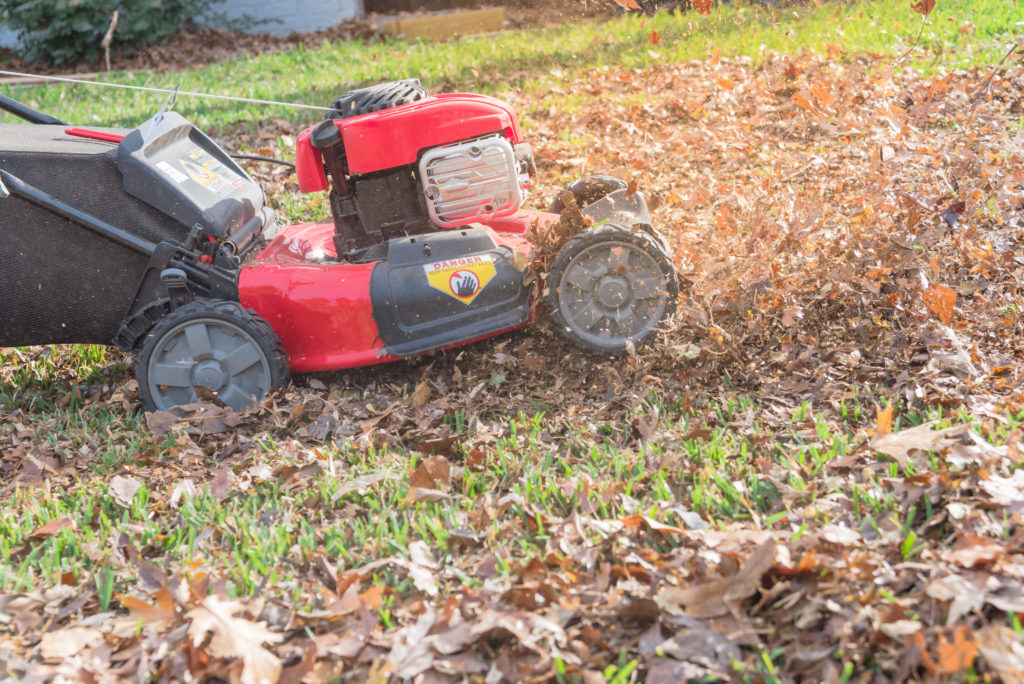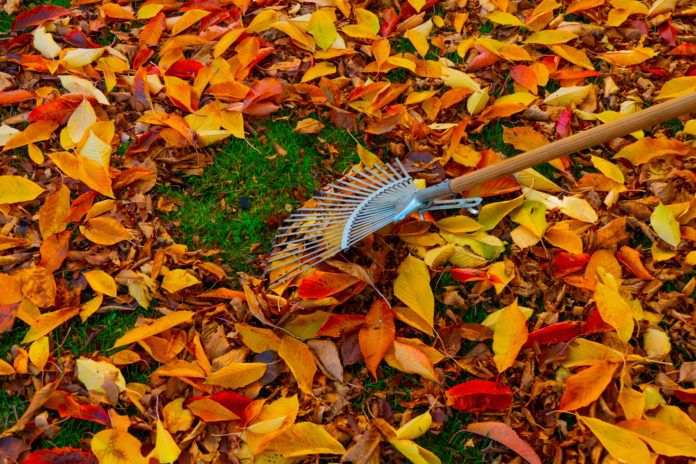There is increasing research that shows that raking and bagging leaves like we all grew up doing in the 1970s and ‘80s is not the best way to manage the millions of colorful leaves that fall from deciduous trees to the ground every autumn. Not only are the traditional plastic bags non-biodegradable, but the 33 million tons of yard debris that ends up in landfills every year, usually isn’t exposed to enough oxygen to decompose properly and then releases excessive levels of methane, which is a greenhouse gas. Using alternative methods of leaf management ensures a more efficient break-down of the organic matter.
First, let’s take a look at the reasons WHY cleaning up leaves is a good idea:
- First, if you live on a property with a lot of trees, a thick blanket of leaves on your lawn can really inhibit grass health by blocking sunlight and preventing continued photosynthesis to feed the grass and keep it healthy. Additionally, too many wet damp leaves in one place can harbor fungus and diseases that can damage other botanical growth.
- Leaves that aren’t cleaned up can also stain decking and concrete, create slipping hazards, and clog drains.
- Tidying up the leaves around your yard adds to the curb appeal of your home and shows pride of ownership, which makes you a good neighbor
- Besides the obvious examples above, leaf clean-up is a great way to get the whole family involved in yard maintenance. Cleaning up leaves is a great way to spend quality time outside with your family and get some exercise. Plus, it comes with the added benefit of fun at the end: who doesn’t love jumping in a large pile of leaves? True delight.
- Further engage children by having them collect some of the prettiest leaves and show them how to press them and turn them into works of art. This teaches them not only appreciation for the natural world, but also engages them in a step-by-step creative process.

Now that we have established the why, we can dig deeper into the HOW:
The first rule of thumb is to not ignore the leaves that fall. Leaving the leaves exactly where they fall is not the best way to deal with them. You basically have three options if you want to forgo the bagging-up option: 1) Collect all of the leaves and redistribute them around your garden 2) For lower volume of fallen leaves, simply mow over them and let them serve as mulch for your lawn 3) Collect the leaves and use in your compost bin. Or, lastly, a combination of all of these.
If you do decide to collect all of the leaves, just remember you don’t have to gather up every single leaf: do the best you can, and then run the lawn mower around the yard to chop up the remaining debris. Likewise, if you don’t have a thick covering of leaves, simply mow over them and and allow them to serve as mulch to protect the soil and impede weed growth

If you are going to compost the leaves, then gather them up with a rake or blower and keep the pile separate from the compost pile. If you add them all at once, they will not decompose properly. Keep the pile close-by and add them gradually to your kitchen compost everytime you turn it.
Some leaf blowers come with a vacuum attachment that chops leaves up as they are sucked up. This is an ideal way to reuse the leaves as mulch in different parts of your landscaping. If you are going to use leaves as mulch, just be sure to keep the material an inch away from the trunks of trees and shrubs. This is excellent organic material that will protect your plants through the winter.

Whatever management method you choose, please commit to NOT burning your leaves! Burning leaves releases way too much smoke into the atmosphere and contributes to poor air quality.
The final question to address in all of this is “WHEN is the right time to clean up leaves?” There is a correct answer to this:
- Clean up leaves in the autumn after the leaves fall and before the first snow.
- Some people’s preference is to clean up leaves a little bit at time as they fall, while other people would rather wait until ALL the leaves are down and then do it all at once. There is no right or wrong answer when it comes to this aspect of timing.
- Just be sure to not wait until spring to clean up all of the autumn debris. If you wait until after winter to clean up leaves the damage that stagnant leaves can cause will have already been done
We care about you and your home and the investment it represents. We know that taking care of a home and landscaping can be a daunting task. If you need help with any of your outdoor or indoor maintenance, reach out to your F.C. Tucker Emge REALTOR® and they can point you to a professional that is a good fit for your needs. The time is now to deal with those leaves and to TALK with your favorite F.C. Tucker Emge real estate agent.




